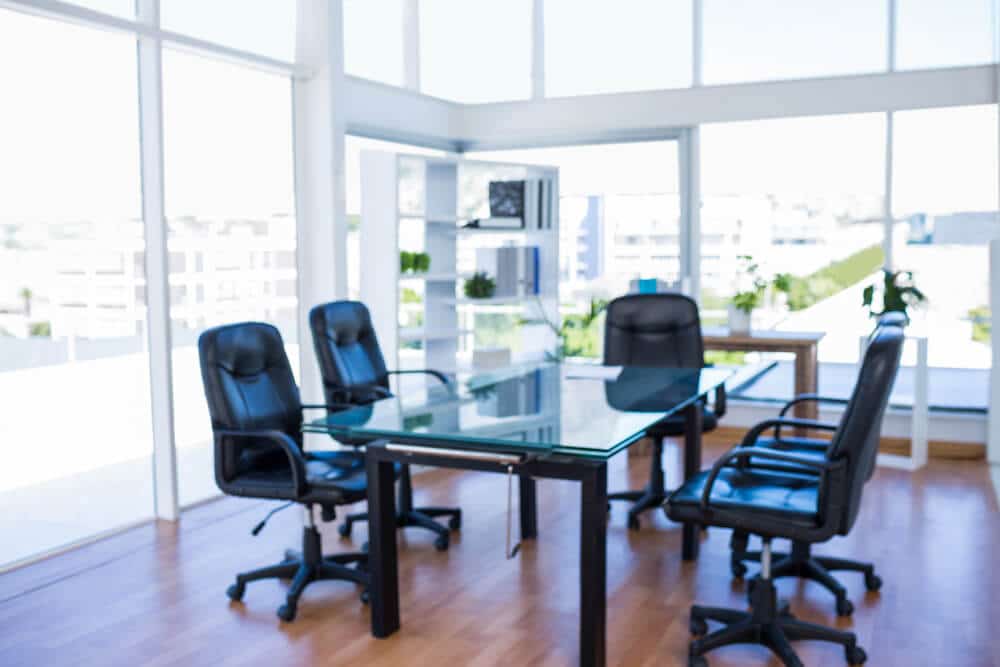Simple Fixes for Bad Office Ergonomics

A strong corporate culture should encompass all senses of the “healthy,” both psychological and physical. A business can’t achieve the latter unless the office design is built on good ergonomics. Take the time to investigate the specific ergonomic problems of your office.
Ergonomics Tips: A Key to Good Business
Sitting in a dark room with uncomfortable chairs is hardly the way to inspire the best in your employees. So to support productivity in your company, review the following ergonomic areas in your own office to see how comfortable they are for your coworkers.
Ergonomics affect productivity, which in turn affects the company’s profit. Given this fact, it’s a wonder that more offices don’t pay attention to this important part of the work environment.
Computer

The keyboard should not be placed too far away from the user, because it may cause strain in the shoulders. On the other hand, if the keyboard is on a rolling tray, improper positioning can also cause muscle tension. According to a BOMI International article republished by FMLink, users’ wrists should “maintain neutral alignment…to the keyboard and mouse” so that elbows are even with the keyboard. The top of the mouse itself should be one inch lower than the keyboard, and mice equipped with palm support can help maximize comfort.
Desk
Adjustable and standing desks can accommodate different heights, but adjustable chairs are good for this same reason. Desks should also allow enough space for “width clearance of legs and feet.” Their surfaces should be expansive enough that workers have room to place their supplies, documents, files, etc. The desk area should also be expansive enough to let workers reach easily to the front or side to grasp whatever items they need.
Floor
If workers stand for long periods of time, absorbent carpet can reduce the strain on their legs and feet. If they sit for long periods of time, foot rockers can help keep their thighs parallel to the floor (a benefit for shorter workers, who may have to slouch so that their feet touch the ground). Stools or bar rails on standing desks can also provide some temporary relief for workers who spend a lot of time on their feet.
Chairs

Consider the different environments in which a person sits. Are they seated at a conference table, for a meeting? Are they sitting at their desks and facing a computer, for most of the day? It may be tempting to use the same chairs in a meeting room as the ones people occupy at their desks. However, both situations call for different ergonomic needs, so both will need different types of furniture.
For workers who have multiple computers set up at their workstations, adjustable chairs with neck rests are a great asset. For everyone else, regular adjustable chairs will do just fine. Chairs should let workers set the “height, depth, length, and angle.” Armrests should be movable, both up and down and side to side. To prevent lower back pain, the chair should also have good lumbar support.
Look for chairs that accommodate numerous body types, such as Steelcase’s Gesture. Its seat, arm rests and seat back have all been designed so that a worker can adjust the chair to their comfort. Another option is the Aeron chair, by Herman Miller, which comes in three sizes but at the same price. The chair can thus fit “the 1st to the 99th percentile of body sizes.”
Lighting
Instead of choosing lighting to improve computer contrast, use lighting that will make non-computer-related tasks—i.e. reading, writing, etc.—easier. Workers may then adjust computer screens for factors like brightness and contrast. Lighting shouldn’t make computer use difficult, however, so avoid using lights that are too bright, which can make the screen too dark and hard to see. To avoid eye strain, workers should look away from their screens every 10–20 minutes.
Phones
Workers who spend a lot of time talking and typing at the same time can benefit from tools that will make their multi-tasking easier. A headset or speakerphone can reduce the strain of cradling the receiver between the head and shoulder while also using the computer.
The Cost of Ignoring Ergonomics

Since facilities managers often purchase office furniture en masse to save money, and special chairs can be expensive, these workers often do not raise complaints. However, ignoring ergonomic concerns can be costly when they lead to work-related muscular skeleto disorders.
According to the CDC website, one study found that “the economic burden as measured by compensation costs, lost wages, and lost productivity, [is] between $45 and $54 billion annually.”
So while purchasing standard chairs for everyone may seem cost-effective at first glance, it may not save as much money as one would think. When you consider the high costs of an uncomfortable work environment, spending the money on ergonomics is a smart investment, not a financial waste.
From the angle of safety, ergonomics also makes financial sense: A haphazardly designed office could result in a lawsuit. Plus, companies that invest in good office furniture can also expect less turnover. For these reasons, good ergonomics makes a lot of business sense.
Photos: Bruce Mars, Shutterstock,



